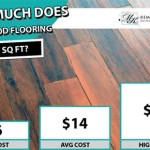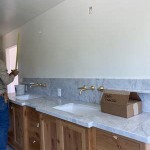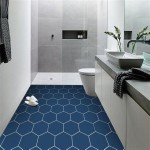Furniture Cups for Wood Floors: Protection and Preservation
Wood floors are a desirable feature in many homes, offering warmth, beauty, and durability. However, they are susceptible to damage from furniture legs. The weight of furniture, combined with regular movement, can leave scratches, dents, and pressure marks on the wood surface. Furniture cups are designed to mitigate these risks, providing a protective barrier between the furniture and the floor. This article explores the benefits, materials, types, and considerations involved in selecting and using furniture cups for wood floors.
Understanding the Purpose of Furniture Cups
Furniture cups serve a critical role in preserving the integrity and appearance of wood floors. They achieve this through several key mechanisms. First, they distribute the weight of the furniture over a wider surface area. This reduces the pressure concentrated on a single point, preventing dents and indentations. Second, they act as a buffer, preventing direct contact between the hard furniture leg and the potentially delicate wood floor. This minimizes the risk of scratches and abrasions caused by movement. Finally, furniture cups can provide a degree of grip, reducing the likelihood of furniture sliding and potentially causing damage during shifts or accidental bumps.
Without adequate protection, furniture can cause significant and lasting damage. Scratches can dull the finish of the floor, diminishing its shine and attractiveness. Dents, especially deep ones, can be difficult to repair and may require professional intervention. Over time, the cumulative effect of these damages can significantly devalue the floor and detract from the overall aesthetic of the room. Furniture cups provide a proactive and relatively inexpensive solution to avoid these problems.
The application of furniture cups extends beyond merely aesthetic preservation. Protecting wood floors also contributes to the long-term value of the home. Well-maintained floors are a significant asset, and preventative measures like using furniture cups demonstrate a commitment to property care. This can be a valuable selling point when the time comes to list the home on the market. Furthermore, by preventing damage, furniture cups help to avoid the need for costly repairs or replacements, saving homeowners significant expense in the long run.
Materials Used in Furniture Cup Construction
The effectiveness of furniture cups is heavily influenced by the materials from which they are constructed. A variety of materials are employed, each offering different properties in terms of durability, grip, and aesthetics. Understanding these differences is crucial for selecting the most appropriate cups for specific furniture and floor types.
Plastic: Plastic furniture cups are a common and affordable option. They are typically made from polyethylene or polypropylene, offering reasonable durability and resistance to wear. Plastic cups are often designed with a smooth surface to allow furniture to slide easily, which can be beneficial for rearranging furniture. However, this can also be a disadvantage if the furniture is prone to sliding unintentionally. The hardness of plastic can also be a concern on softer wood floors, as it can still cause scratches under significant weight or movement. Choosing a softer, more pliable plastic can mitigate this risk.
Felt: Felt furniture cups provide a soft and protective barrier between the furniture and the floor. Felt is a non-abrasive material that minimizes the risk of scratches and abrasions. Felt cups are often combined with a plastic or rubber base for added stability and durability. The soft surface of felt also helps to absorb some of the impact from movement, further protecting the floor. However, felt can attract dust and debris, which can become abrasive over time. Regular cleaning and replacement of the felt pads are necessary to maintain their effectiveness.
Rubber: Rubber furniture cups offer excellent grip and stability. Rubber is a naturally resilient material that can absorb shock and prevent sliding. Rubber cups are particularly well-suited for furniture that is prone to movement, such as chairs and tables. The non-slip properties of rubber can also be beneficial on smooth or polished wood floors. However, some types of rubber can leave marks or stains on certain finishes, especially polyurethane. It is important to choose a high-quality, non-marking rubber material. Furthermore, the rubber may degrade over time, especially when exposed to sunlight or heat, requiring periodic replacement.
Cork: Cork furniture cups are an environmentally friendly option. Cork is a natural, renewable resource that offers good cushioning and protection. Cork cups are often used for delicate or antique furniture. The soft and porous nature of cork helps to distribute weight evenly and prevent scratches. However, cork is not as durable as plastic or rubber and may wear down more quickly. Cork cups also tend to be more expensive. Regular inspection and replacement may be necessary to ensure continued protection.
Metal: While less common, metal furniture cups offer a more decorative and durable option. Often made of brass or other polished metals, these can offer an aesthetic appeal that other materials lack. However, these are mostly for show, as metal can scratch wood floors and can be louder when furniture is moved. They may incorporate a felt or rubber lining to provide the actual protection.
The ideal material will depend on the specific application, considering factors such as the type of furniture, the type of wood floor, and the desired level of protection and aesthetics. Careful consideration of these factors will ensure that the chosen furniture cups provide effective and long-lasting protection for the wood floors.
Types of Furniture Cups and Their Applications
Furniture cups are available in a variety of shapes, sizes, and styles to accommodate different types of furniture legs and protection needs. The selection of the appropriate type of cup is crucial for ensuring optimal performance and preventing damage to the wood floor. Understanding the different types and their intended applications is essential for making an informed decision.
Round Furniture Cups: Round furniture cups are the most common type and are suitable for furniture with round legs. They come in various diameters to accommodate different leg sizes. Round cups are often used for chairs, tables, and other general-purpose furniture. They are typically made from plastic, felt, or rubber and can be easily installed by simply placing them under the legs.
Square Furniture Cups: Square furniture cups are designed for furniture with square or rectangular legs. They provide a snug fit and prevent the legs from slipping out of the cup. Square cups are often used for sofas, armchairs, and other upholstered furniture. They are typically made from plastic or rubber and may have a raised edge to further secure the legs.
Corner Furniture Cups: Corner furniture cups are specifically designed for the corners of furniture, such as bed frames or dressers. They provide support and protection for the entire corner, preventing damage from pressure or movement. Corner cups are typically made from plastic or rubber and may have a shaped design to conform to the corner of the furniture.
Furniture Coasters: Furniture coasters are similar to cups but are typically larger and flatter. They are designed to distribute weight over a wider surface area, making them ideal for heavy furniture such as pianos or large bookshelves. Coasters are often made from hard plastic or rubber and may have a textured surface to prevent slipping. They are also useful under the legs of furniture sitting on carpets, to prevent indentations.
Furniture Leg Caps: Furniture leg caps, unlike cups, fit over the leg as opposed to under it. These are often used similarly to furniture cups, and protect the floor in similar manners.
Adjustable Furniture Cups: Adjustable furniture cups feature a mechanism to raise or lower the furniture leg. This is useful for leveling furniture on uneven floors or for adjusting the height of a piece of furniture. They typically incorporate a threaded screw or adjustable foot that can be turned to achieve the desired height. These are often used with heavier or more permanent furniture, where stability is paramount.
When selecting furniture cups, it is important to consider the shape and size of the furniture legs, the weight of the furniture, and the type of wood floor. Choosing the appropriate type of cup will ensure optimal protection and prevent damage to the floor.
Factors to Consider When Choosing Furniture Cups
Selecting the right furniture cups for wood floors involves considering several key factors to ensure optimal protection and performance. The wrong choice can lead to inadequate protection or even further damage to the floor. These factors should be carefully evaluated before making a purchase.
Furniture Leg Shape and Size: The shape and size of the furniture legs are the primary considerations when choosing furniture cups. The cups should fit snugly around the legs without being too tight or too loose. Too tight a fit can damage the legs, while too loose a fit can allow the legs to slip out of the cups. Measure the diameter or dimensions of the legs carefully and choose cups that are slightly larger to allow for easy placement and removal.
Furniture Weight: The weight of the furniture is another important factor to consider. Heavier furniture requires more durable and supportive cups. Choose cups made from materials that can withstand the weight of the furniture without compressing or deforming. For very heavy furniture, consider using furniture coasters or adjustable furniture cups that can distribute the weight over a larger surface area.
Wood Floor Type and Finish: The type and finish of the wood floor can also influence the choice of furniture cups. Softer wood floors, such as pine or fir, are more susceptible to damage than harder wood floors, such as oak or maple. Similarly, delicate finishes, such as polyurethane or varnish, can be easily scratched or stained. Choose cups made from non-abrasive materials, such as felt or rubber, that will not damage the floor's finish.
Cup Grip and Stability: The grip and stability of the cups are important for preventing furniture from sliding or moving unexpectedly. Choose cups with a non-slip surface or a textured bottom to provide better grip on the floor. Rubber cups are particularly effective at preventing sliding, while felt cups may require additional gripping material. The overall stability of the cup is crucial for preventing tipping or wobbling of the furniture.
Durability and Longevity: The durability and longevity of the cups are important for ensuring long-term protection. Choose cups made from high-quality materials that are resistant to wear and tear. Consider the expected lifespan of the cups and whether they are easily replaceable. Regular inspection and replacement of worn or damaged cups are necessary to maintain their effectiveness.
Aesthetics: While protection is the primary concern, the aesthetics of the cups should also be considered. Choose cups that complement the style of the furniture and the overall decor of the room. Cups are available in a variety of colors, shapes, and materials to suit different preferences. Consider whether you want the cups to be visible or discreet. Some cups are designed to blend in with the furniture or the floor, while others are intended to be a decorative element.
Cost: The cost of furniture cups can vary depending on the materials, type, and brand. Set a budget and choose cups that offer the best value for the price. Consider the long-term cost of protecting the floor versus the cost of potential repairs or replacements. Investing in high-quality cups can save money in the long run by preventing damage.
By carefully considering these factors, homeowners can select the most appropriate furniture cups to protect their wood floors from damage and maintain their beauty and value for years to come.

2 3 8 Inch Non Slip Caster Cups Tpr Base 4 Pack Shepherd Hardware

4 Rubber Base Castor Cups For Wooden Floors And Carpets Furniture Non Slip

4 Rubber Base Castor Cups For Wooden Floors And Carpets Furniture Non Slip

Furniture Coasters 8pcs 2 Caster Cups For Hardwood Floors Rubber Pads Non Slip Grippers Bed Couch Stoppers To

Sol 4 Rubber Base Castor Cups For Wooden Floors And Carpets Furniture Non Slip Caster Protect Floor Shopping Com

4 Rubber Base Castor Cups For Wooden Floors And Carpets Furniture Non Slip

Castor Cups Felt Base 60mm Pack Of 4 Light Wood Grain Dunelm

8pk Rubber Base Castor Cups For Wooden Floors And Carpets Furniture Non Slip

8pk Rubber Base Castor Cups For Wooden Floors And Carpets Furniture Non Slip

Scotch Caster Cups Hard Plastic 3m United States







